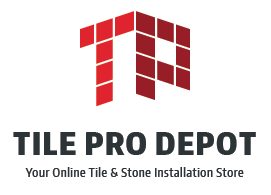
Robot Pool Cleaner: Shock or Algaecide First?
Maintaining a clean swimming pool involves a little bit of chemistry and the right equipment — such as a quality robot pool cleaner. But, when you come across algae or cloudy water, that common question pops up: Do you use shock or algaecide first? If you’re also running a pool vacuum, skimmer, or using a swimming pool robot cleaner, the correct timing of treatments could make all the difference.
This article goes deep about the order in which you shock and apply algaecide — and what it means for your robotic pool cleaner and pool maintenance strategy in general.
Before considering that question, it’s helpful to understand what these chemicals do. Pool shock – usually a concentrated chlorine – sanitizes your water and oxidizes it to kill off bacteria and algae. Algaecide sterilizes algae so it can’t spread, but it’s not going to kill a full-on outbreak on its own.
Shocking First, Then Algaecide — A Quick Explanation Why
They will work best if the pool is shocked first. Here’s the reasoning:
Chlorine shock eradicates algae and bacteria already in the water. When it’s done properly this gets most of the impurities.
Algaecide is a follow-up, but it follows the kettling. Finally, after shocking, once chlorine levels have been re-established, the algaecide helps prevent the possibility of algae returning.
If you add algaecide before shock, you can end up reducing the effectiveness of the shock, as the high chlorine levels can break down the algaecide and it will not work.
After the pool has been shocked and the chlorine in it has had a chance to balance out (usually 24 to 48 hours), you can then open up robot pool cleaner, whether it be the Beatbot AquaSense 2 Pro or the Maytronics pool cleaner and get swimming. A pool cleaner robot is invaluable in cleaning dead algae and dirt once they’re treated. This is when it arrives and you use your vacuum cleaner for pool so pool or wall climbing pool cleaner at this point will help return your water back to the crystal-clear condition.
When algae is involved, a pool vacuum for algae or a pool vacuum robot with powerful suction should be able to take care of any remaining particles effectively, especially around corners as well as steps.
Don’t overlook your skimmer and pool booster pump, even while you’re at it. A skimmer, which pools floating debris before it can sink, and a booster pump, which increases the pressure for pressure-side cleaners, for extra cleaning power with this system.
Properly Acid Washing Your Pool
One Interesting Read: How To Drain An Inground Pool Without A Pump
And for debris-filled pools or resistant algae, the members of the Beatbot family — the Beatbot AquaSense 2 Ultra, the Beatbot AquaSense 2 Pro and the Beatbot AquaSense 2 — come packed with high-tech sensors that help them navigate more carefully through the water and which allow for better filtration to clean the pool faster after treating it with chemicals.
Conclusion
So what comes first — shock or algaecide? The answer is plain and clear, always shock first. After the chlorine levels have normalized a bit, use an algaecide to prevent the algae from reappearing. The Best Solution for Cleaning Your Pool This powerful pool robot will efficiently clean an entire pool at double the rate of most other robot cleaners, making it the best option you have when it comes to your robot pool cleaner — particularly when you’re using a quality brand like Beatbot. Add chemical force to mechanical power for a clean, clear, safe pool that invites one and all to dive in.

Welcome to Tile Pro Depot! We established this site to service the specific needs of the tile installation professional. Tile installation tools, tile setting materials, premixed grout and more tile installation products online at Tile Pro Depot.